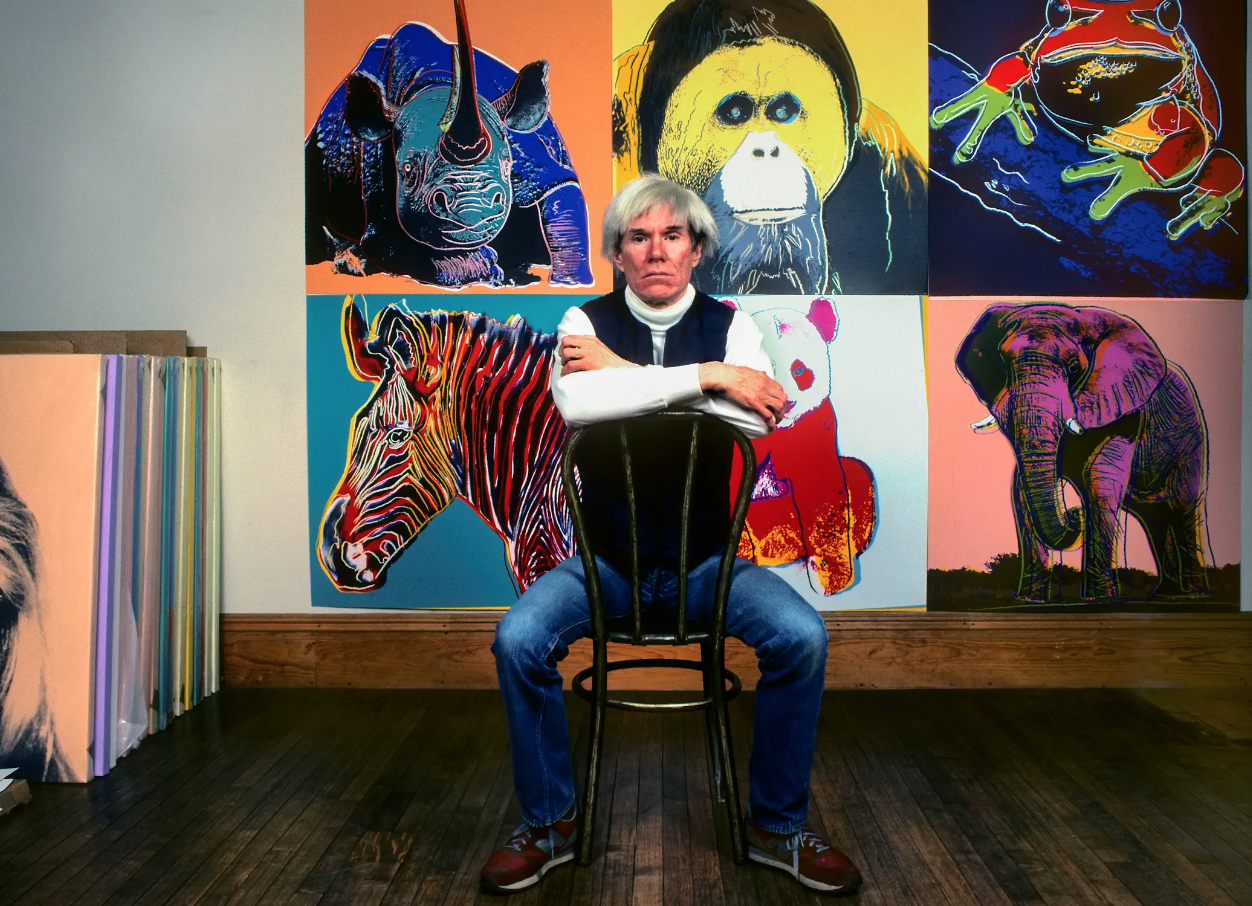ANDY WARHOL
Andy Warhol (1928-1987) was one of the most influential figures in the art scene from the 1960s to 80s in New York. He emerged as the leading figure of Pop Art, a movement that incorporated consumer culture into artworks produced with mass production techniques, blurring the lines between high art and commercial art. Warhol’s diverse body of work includes paintings, prints, sculptures, and films, often grouped in series that explore themes such as consumerism, violence, celebrity culture, and socio-political commentary. Warhol's art frequently transformed ordinary objects into items of reverence, while his repetitive use of dramatic images often stripped them of their original meaning. His works are imbued with powerful commentary that challenges the status quo. Born in Pittsburgh, Pennsylvania, Warhol graduated from the Carnegie Institute of Technology in Pittsburgh with a degree in pictorial design. He began his career by moving to New York and working as a commercial artist and illustrator, but by the 1960s, he had developed his iconic style of large-scale, colorful prints featuring popular consumer goods and mass media images.
Warhol's art has been exhibited extensively across the United States and Europe. Notable solo exhibitions include those at the Neue Nationalgalerie in Berlin, the Wilhelm-Hack-Museum in Ludwigshafen, Germany, the Museum of Modern Art in New York, and the Centre Georges Pompidou in Paris. His works have also been showcased in major institutions such as the National Museum of American Art, Smithsonian Institution in Washington, the Museum Haus Lange in Krefeld, Germany, and the Moderna Museet in Stockholm. The Andy Warhol Museum, dedicated to his legacy, opened in Pittsburgh, Pennsylvania, in May 1994.

